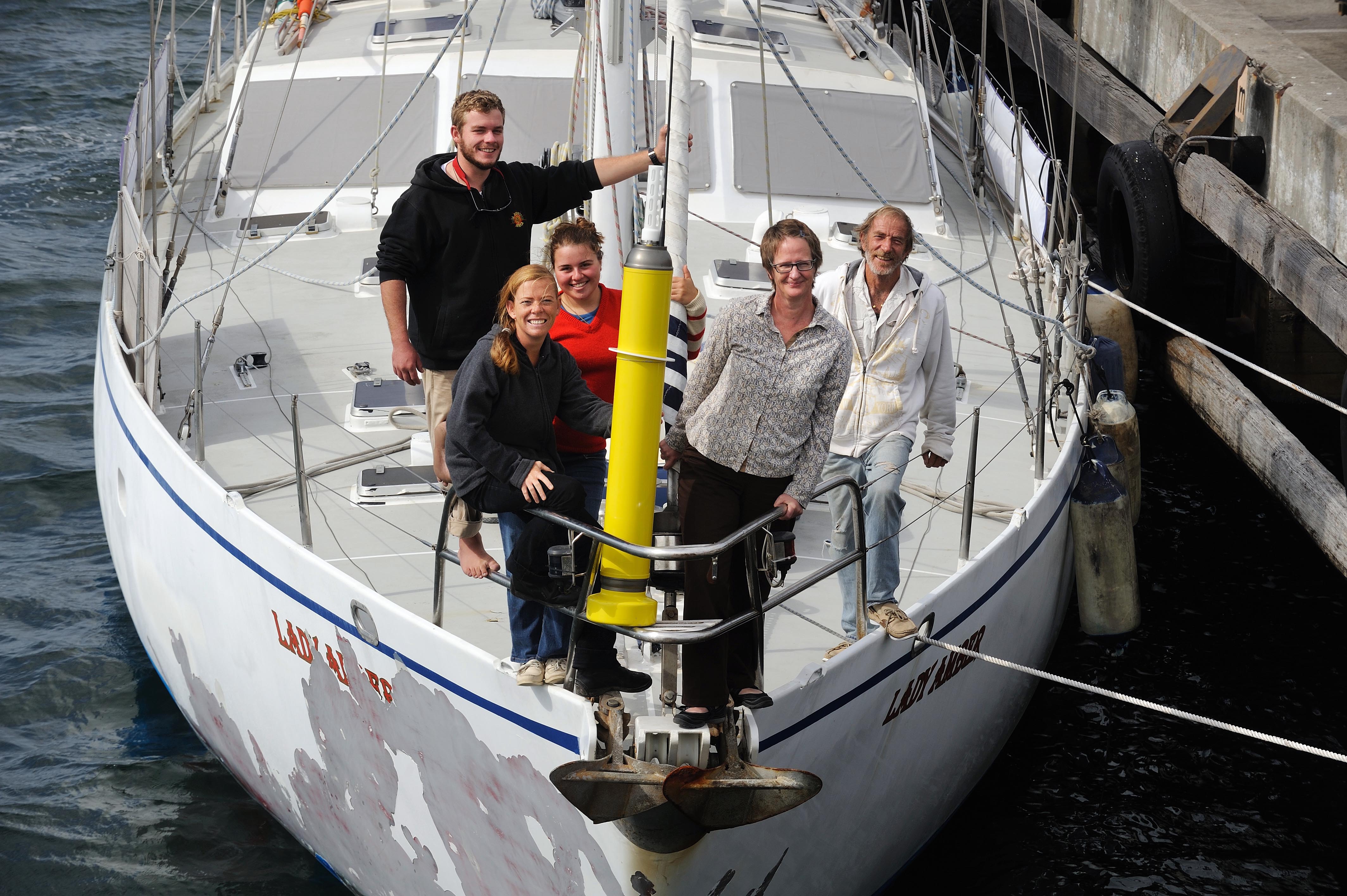The ability of oceanographers to study how the Indian Ocean shapes Australian and global climate was helped this week by the arrival in Hobart of a 20-metre South African yacht to take on board a new suite of Argo ocean measuring floats for deployment in the next three months.
The Lady Amber, skippered by Captain Peter Flanagan, has been under charter to CSIRO to seed the Indian Ocean with Argo profilers, in a region east and south of territory where there is known pirate activity. The yacht will take on around 5 to 10 profilers in Hobart for deployment on her return journey to South Africa.

With an Argo profiler, CSIRO oceanographer and co-Chair of the international Argo ocean research program , Dr Susan Wijffels, with the Master of the Lady Amber, Capt Peter Flanagan (right) and to her left crew, Ryan Struthers, Helen McLean and Rika Botha.
The yacht’s arrival coincides with a new study published this week in Nature Climate Change revealing an upward trend of global ocean warming spanning at least 100 years.
Nearly 3200 Argo profilers report every 10 days on ocean conditions, providing a global map of temperature and salinity for the upper two kilometres of ocean. Australia is the second largest contributor to the international Argo program, behind the United States, with nearly 400 active floats operating in the Indian Ocean and Southern Oceans and Tasman Sea.
The profilers also give observations critical to Australia’s ocean forecast system, operated by the Bureau of Meteorology.
Last year US and Australian naval vessels deployed instruments nearer the Horn of Africa where gaps existed in the global fleet as a result of pirates operating in the region.
According to Dr Susan Wijffels, co-Chair of the international Argo project, distribution of the profiling instruments is a real challenge for oceanographers.
“With shipping companies consolidating their routes and our need to have instruments operating roughly every 300 kms, the charter of the Lady Amber has been critical for us to fill fleet gaps in the Indian Ocean,” Dr Wijffels said.
“The oceans are the fly wheel of our climate system and the international Argo program now provides 3,000 ocean watch towers from which to observe how the ocean is changing year-to-year and decade-to-decade.”
She said the latest published results showing the ocean warming trend extended back 100 years helps vindicates the investment of more than 30 countries in this volunteer observing program. The warming has been detected, grading from .59-degree Celsius at the surface to .12-degree Celsius at 900m depth.
The program is coordinated through the UNESCO and the World Meteorological Organisation’s Intergovernmental Oceanographic Commission Joint Technical Commission for Oceanography and Marine Meteorology. Australia’s contribution is through the CSIRO Wealth from Oceans Research Flagship and Australia’s Integrated Marine Observing System. The Intergovernmental Oceanographic Commission has a regional office in Perth, funded jointly through the Federal and West Australian governments.
French scientist, who coordinates Argo support, said that after a decade of implementation using mainly research vessels and merchants ships, global observing programmes are now investigating green, flexible, free or non-profit based, and dedicated deployment platforms. Lady Amber may take on more Argo profilers in Indian. Plans for operations in the South Atlantic Ocean are already under study.
Media: Craig Macaulay. Ph: 03 6232 5219. E: craig.macaulay@csiro.au Mb: 0419 966 465

